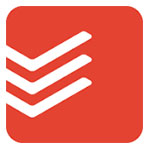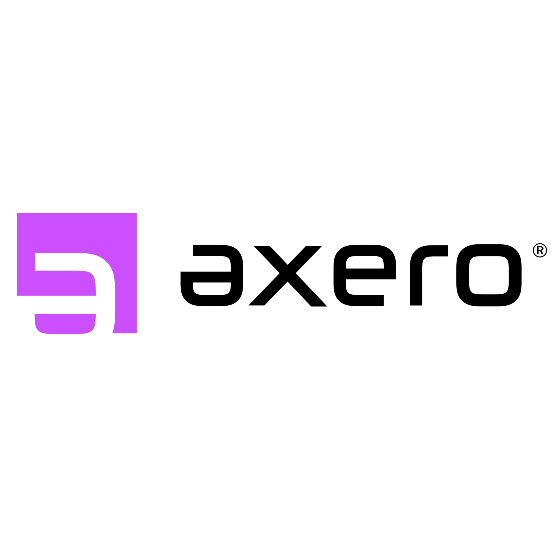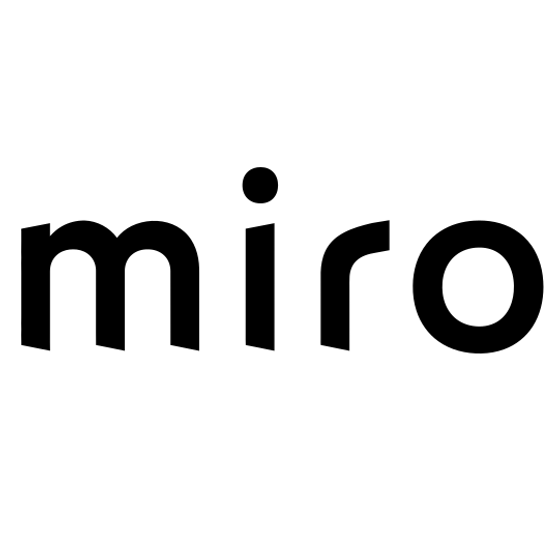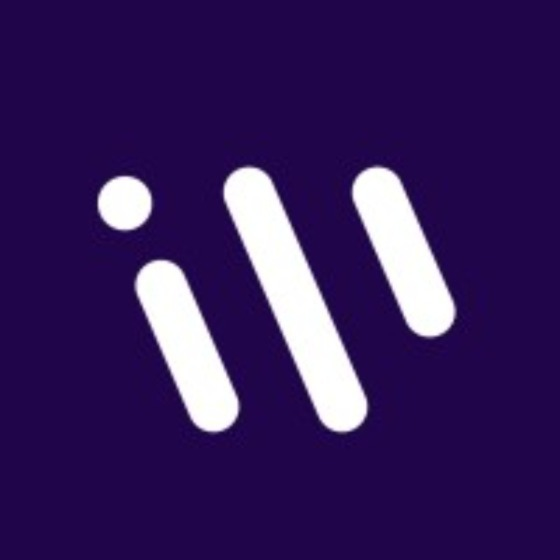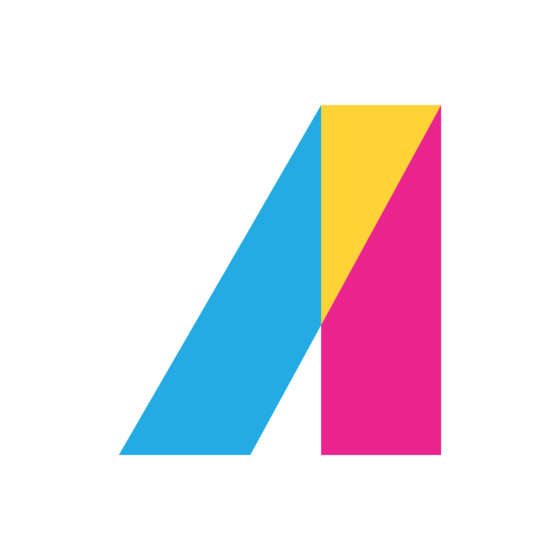10 Best Remote Collaboration Software List
Here's my pick of the 10 best software from the 20 tools reviewed.
Get free help from our HR software advisors to find your match.
Choosing the right remote collaboration software can be overwhelming with so many options available. If you’re looking for a tool that simplifies communication and bridges distance in your remote team, this guide will highlight the top solutions to keep everyone connected and productive.
Why Trust Our Software Reviews
We've been testing and reviewing HR software since 2019. As HR professionals ourselves, we know how critical and difficult it is to make the right decision when selecting software.
We invest in deep research to help our audience make better software purchasing decisions. We've tested more than 2,000 tools for different HR use cases and written over 1,000 comprehensive software reviews. Learn how we stay transparent, and take a look at our software review methodology.
Best Remote Collaboration Software: Pricing Comparison Chart
This comparison chart summarizes pricing details about my top remote collaboration tool selections to help you find the best software for your budget and business needs.
| Tool | Best For | Trial Info | Price | ||
|---|---|---|---|---|---|
| 1 | Best integrated comms and knowledge base | Free demo available | Pricing upon request | Website | |
| 2 | Best collaborating on knowledge documents | 30-day free trial | From $18/user/month | Website | |
| 3 | Best for team task assignments | 30-day free trial | From $4/user/month (billed annually) + free plan available | Website | |
| 4 | Best for interactive discussion tools | 14-day free trial | From $10/user/month | Website | |
| 5 | Best collaborative online whiteboard tool | Free plan available | From $8/user/month | Website | |
| 6 | Best for improving employee communications | Free demo available | Pricing upon request | Website | |
| 7 | Best for team-based task management | Free trial available | From $8.25/user/month (billed annually) + free plan available | Website | |
| 8 | Best for aligning remote and hybrid teams | Free plan + 14-day free trial available | From $18/user/month | Website | |
| 9 | Best remote collaboration software for creative teams | 14-day free trial + freemium plan available | From $10/user/month (billed annually) | Website | |
| 10 | Best remote collaboration software for kanban boards and task assignments | 14-day free trial | From $9/user/month (billed annually) | Website |
-

Rippling
Visit WebsiteThis is an aggregated rating for this tool including ratings from Crozdesk users and ratings from other sites.4.8 -

Guru
Visit WebsiteThis is an aggregated rating for this tool including ratings from Crozdesk users and ratings from other sites.4.6 -

Absorb LMS
Visit WebsiteThis is an aggregated rating for this tool including ratings from Crozdesk users and ratings from other sites.4.6
Best Remote Collaboration Software Reviews
Here’s a brief description of each remote collaboration tool to showcase each system’s best use case, highlight some noteworthy features, and explain their pros and cons. I’ve also included screenshots to give you a snapshot of the user interface.
Hub is an intranet solution designed for businesses to improve workplace efficiency and foster employee engagement. It caters to organizations seeking a user-friendly platform for internal communication, knowledge sharing, and client management.
One reason I chose Hub is its targeted, personalized communications feature. This allows you to tailor messages to specific groups within your organization, ensuring that relevant information reaches the right people without overwhelming others. This targeted approach helps maintain clarity and focus in communication.
It also offers real-time updates, allowing your team to stay informed about the latest developments as they happen, fostering a sense of immediacy and connection. This is particularly beneficial for remote teams, as it keeps everyone aligned and engaged, no matter where they are. I also like that all of Hub's comms features are integrated tightly with its knowledge base setup, so teams can ask questions, have discussions, and share knowledge in one place.
Other features include news articles, tasks, commenting, instant messaging, people directory, image manager, content templates, version control, content expiry, and task management.
Guru is an AI-driven collaboration, search, and knowledge-sharing tool designed to centralize scattered company information from various documents, apps, and chats. It excels in making remote collaboration both easy and productive, offering an intuitive interface that simplifies information sharing and retrieval.
As a remote collaboration software, Guru allows teams to work together collaboratively on company documents. Multiple team members can work on the same digital document simultaneously, with changes visible in real-time by other users to avoid doubling up on work.
Guru also helps remote teams work more efficiently by offering real-time knowledge access, improving the speed of problem-solving, enhancing productivity, and fostering a culture of transparency. Its ability to provide just-in-time information makes remote work less daunting and more effective.
Guru also supports syncing with external data sources, maintains high security standards with features like SSO, and provides extensive support resources for users.
Integrations are available natively with Slack, Microsoft Teams, Gmail, Outlook, Salesforce, Google Chrome, Zendesk, Chrome, Firefox, Asana, Trello, Jira, and Confluence.
Todoist is a task management application designed to help you organize and prioritize your tasks and projects. With this platform, you can manage both personal and professional responsibilities in one place.
You can create projects and invite up to 250 team members, making it easy to collaborate on tasks and keep everyone aligned. Each member can add, complete, and comment on tasks, ensuring that all project information is centralized and accessible.
Within shared projects, you can assign tasks to specific team members, clearly defining responsibilities. This helps in tracking who is working on what and ensures accountability. Additionally, you can set due dates and priorities for tasks, aiding in effective time management across the team.
Integrations include Airmail, Evernote, Google Calendar, IFTTT, Zapier, Jira, Alfred, AI Assistant, Make, Microsoft Teams, Newton Mail, and Slack.
Axero is a knowledge sharing platform that can be used to build out a customized knowledge base or intranet for your remote team. It provides all kinds of content creation options, letting you create blog articles, forms and surveys, discussion forums, and more. You can also send out mass broadcasts for important updates or timely news.
The software also has interactive elements to facilitate engagement and discussion. For example, live chat, commenting, like buttons, and @-mentions all allow employees to engage with content, ask questions, and share feedback. You can also set up notifications to make sure everyone receives essential information.
Additionally, the platform provides best-in-class mobile apps for both iOS and Android. This means you can make your knowledge base fully accessible on the go for your distributed workforce. Higher-tier plans also allow for white labeling of the mobile apps, so you can customize it to reflect your company branding and provide a familiar environment to remote staff.
The software integrates with lots of other tools including Outlook 365, Sharepoint, OneDrive, Microsoft Teams, Google Workspace, Slack, Zoom, Dropbox, Box, Unsplash, and Twilio, among others.
Miro offers a collaborative online whiteboard platform, well-suited for remote teams. It distinguishes itself by not restricting user access based on subscription plans, simplifying the process of sharing boards.
I chose Miro because of its exceptional ability to facilitate visual collaboration, making it ideal for teams that thrive on brainstorming and creative processes. Unlike other tools, Miro’s infinite canvas and wide array of templates make it stand out for teams needing a dynamic and interactive environment.
Other notable features include Miro's infinite canvas, flexibility in expressing ideas through various formats, and a planner tool for tracking projects. Additionally, the Miroverse provides a space for users to share and discover project templates from the community, encouraging a shared learning environment.
Some of Miro’s integrations include Confluence, Notion, Monday.com, Asana, Jira, Slack, Microsoft Teams, Zoom, Dropbox, Google Drive, and Trello.
Workvivo is an employee communication platform designed to foster employee engagement and improve the overall employee experience. By providing a space for open and inclusive communication, it positions itself as a suitable tool for organizations aiming to create a sense of community and elevate employee involvement.
I chose to include this platform because of its unique makeup. It's like a social intranet platform, and can replace outdated wikis for a more dynamic and engaging experience. The shout-outs feature promotes a culture of appreciation by allowing public recognition of employee achievements. Meanwhile, spaces provide dedicated areas for team collaboration and file sharing, while Goals & Values help align employee actions with the company's mission.
The software also has content automation tools, helping you to ensure timely distribution of important updates. A People Directory offers a searchable database of employee contacts. Finally, the insights tool delivers analytics on engagement and communication. A mobile app is also available, providing connectivity on the go.
Integrations include Google Drive, Microsoft Teams, Salesforce, Slack, Workday, Zoom, and others. Pricing information is available upon request, and a free demo is available.
MeisterTask is a task management tool that helps businesses manage their workflows and facilitate productive team collaboration. It's a solid remote collaboration tool for teams thanks to its robust security features and straightforward user interface, requiring minimal training to start using the software successfully.
MeisterTask simplifies remote collaboration through a range of features, including a meeting agenda board, project-specific task and sub-task management tools, task relationships, tags, checklists, and time-tracking, helping all your team members gain visibility into their colleagues' activities.
Employees can also collaborate directly through discussions, notes, and note-sharing tools, making it easier to share ideas remotely or asynchronously. Their user-friendly Kanban boards also help teams visualize tasks and workflows, with simple tools to create, organize, and prioritize workflows in a customized manner.
Additionally, MeisterTask ensures security with SSL encryption, regular backups, and GDPR compliance, while also offering role-based permissions to control team member access to tasks and projects.
Integrations are available with MindMeister, GitHub, ZenDesk, Slack, Microsoft Teams, Gmail, and Microsoft Outlook.
Quantive Results is a strategy execution platform that's built to help leadership teams plan their business strategy collaboratively. It also has tools to set and track team and company goals, helping to keep everyone aligned on their shared objectives.
Whiteboards can be used for mapping out your strategic planning. You can also use the retrospective templates included in the software to evaluate what went well in a past timeframe, and what needs improvement going forward. With your strategy in place, you can establish OKRs and KPIs in the system that can be interconnected, cascading, and assigned to specific teams.
Another helpful feature included in the software are OKR and task alignment, which helps connect specific projects and tasks with established business objectives. Some other key features include commenting on KPI dashboards, automated notifications, advanced access permissions, and reporting and analytics tools.
The software integrates with other workplace tools including Slack, Microsoft Teams, Asana, Miro, Jira, SurveySparrow, BambooHR, Workable, Humaans, and Rally, among others. You can also access additional integrations with a paid Zapier account.
Ziflow is a cloud-based collaboration platform specifically designed to support creative teams. Their review and approval workflows enable creative teams of project managers, designers, developers, copywriters, photographers, artists, and other professionals to collaborate across multiple time zones, file formats, and media types.
Ziflow eliminates the need for unnecessary meetings or back-and-forth emails, saving both time and money while providing an efficient way to track project progress from start to finish. Users can manage and assign tasks, track project progress, and review feedback. You can also easily see which tasks have been completed or are still pending completion.
Their platform provides real-time analytics that summarize how much time each task took and how many people were involved in each task's completion process. This feature helps managers get a better understanding of their team's workflow process so they can optimize it for maximum efficiency over time.
Ziflow also offers workflow automation tools that make it easier for teams to manage their processes. Users can create custom approval workflows that speed up decision-making and help ensure consistency across the organization.
Ziflow allows users to create digital asset libraries to store and manage their files. This makes it easy for users to access their files anytime without searching through multiple folders or drives. Additionally, its library system includes customizable tags and filters so users can quickly find what they’re looking for without having to wade through long lists of assets.
Integrations are available with Asana, Basecamp, ClickUp, DropBox, Google Drive, Jira, Microsoft Teams, monday.com, Oracle Netsuite, Slack, Trello, and Zapier.
In addition, Ziflow has plug-ins for all your Adobe Creative Cloud apps (After Effects, Illustrator, InDesign, Photoshop, Premiere Pro, etc.), plus their Webhook Zibots, which can integrate with other software systems that offer an API.
Redbooth
Best remote collaboration software for kanban boards and task assignments
Redbooth is a remote collaboration tool that helps teams organize tasks and communicate effectively. It offers features like task assignments, due dates, and tags to keep everyone on the same page.
I chose Redbooth because it provides customizable workspaces that let you tailor projects to your team's needs. Using customizable kanban boards, Redbooth makes it easy to sort, track, and organize tasks across your organization. When assigning tasks, Redbooth will recommend the best person for the assigned task and due dates through their “Smart Redbooth” tool.
Features include task prioritization, task dependencies, subtasks, time tracking, file sharing, real-time notifications, activity streams, reporting and analytics, calendar integration, workload management, and mobile apps for iOS and Android devices.
It also includes thorough productivity reports to see task status, and how time is spent. It also allows you to zoom in on one specific task, or review the entire project all in one view.
Integrations include Box, Dropbox, Gmail, Google Drive, Microsoft Outlook, Microsoft Teams, Okta, Slack, Zapier, and more.
Other Remote Collaboration Tools
Here are a few more options that didn’t make the best remote collaboration software list but are still worth checking out:
- Podio
All-in-one project management tool with excellent automation capabilities
- Bluescape
Collaborative space with emphasis on images
- Height
For collaborating within a project management software
- ClickUp
All-in-one productivity tool with over 50 automated actions.
- Slack
For asynchronous teams
- MediaValet
For collaborating on digital assets and files
- Smartsheet
Project management through user-friendly spreadsheets
- Lucidspark
For communication around charts, documents, and diagrams
- Wrike
All-in-one project management for marketers
- Connecteam
A dedicated app for task management and task-specific communication
Selection Criteria for Remote Collaboration Tools
When evaluating remote collaboration software, I focused on specific features and functionalities that support seamless, productive teamwork for distributed teams. To identify the best tools, I researched and personally tested a variety of software options to ensure they address the common buyer needs and pain points of those managing remote teams.
Here's a summary of the selection criteria I used to create this list:
Core Functionalities (25% of total score): To be considered for inclusion in this list, each solution had to fulfill these common use cases first:
- Real-time communication to keep team members connected instantly
- File sharing and storage to make documents and files readily available
- Task assignment and tracking to help team members stay organized and aligned
- Project visibility so all team members can follow progress and deadlines
- Mobile access to support collaboration anytime, anywhere
Additional Standout Features (25% of total score): To help me find the best software out of numerous available options, I also kept a keen eye out for unique features, including the following:
- Real-time document editing that supports multiple users simultaneously
- AI-powered project insights and analytics to track productivity
- Integrations with key tools such as Slack, Google Calendar, or Zoom to streamline collaborative work
- Customizable dashboards that enhance task focus and prioritization
- Project templates or pre-built workflows to speed up task initiation and reduce setup time
Usability (10% of total score): To evaluate the usability of each system, I considered the following:
- Simple navigation is essential, with clear and accessible menus to avoid user frustration
- Interactive dashboards that allow drag-and-drop functionality improve task management and visibility
- Role-based access controls ensure users only access relevant tools and data, adding security and organization
- Clear labeling and color-coded organization make workflows intuitive, which is especially critical for remote teams
Onboarding (10% of total score): To get a sense of each software provider's customer onboarding process, I considered the following factors:
- In-app guides and tutorials to help new users master the platform quickly
- Templates for task setup to accelerate initial projects
- Accessible training videos, webinars, and product tours to improve user adoption and troubleshooting
- Live chat or chatbot assistance for questions during the initial setup phase
Customer Support (10% of total score): To evaluate the level of customer support each vendor offered, I considered the following:
- 24/7 support options including live chat, email, and phone support
- Dedicated account managers or onboarding specialists
- Comprehensive knowledge bases and FAQ sections to help users solve issues independently
- Ticket escalation options to ensure that more complex issues receive prompt attention
Value for Price (10% of total score): To gauge the value of each software, I considered the following factors:
- Transparent, scalable pricing plans for small teams up to large enterprises
- Flexible subscription options including month-to-month or annual billing
- A free trial period to test out the software prior to purchasing it
- Clear breakdowns of included features per pricing tier
Customer Reviews (10% of total score): Evaluating customer reviews is the final element of my selection process, which helps me understand how well a product performs in the hands of real users. Here are the factors I considered:
- Positive user ratings across multiple review platforms
- User feedback on support responsiveness that highlights how quickly issues are resolved
- Comments on ease of use and interface design that reveal how intuitive the platform is for first-time users
- Feedback on mobile app functionality that demonstrates how well the software works for mobile collaboration
- Comments about specific feature benefits that validate how well the software addresses common remote team challenges
Using this assessment framework helped me identify the software that goes beyond basic requirements to offer additional value through unique features, intuitive usability, smooth onboarding, effective support, and overall value for price.
Features of Remote Collaboration Software
The right remote collaboration software isn’t just about messaging; it’s about building a space where every team member can seamlessly contribute, share, and build on each other’s ideas, no matter where they’re located.
Here’s a list of essential features to help teams thrive in a remote environment:
- Real-Time Messaging: Having a way to quickly exchange ideas without delay keeps everyone on the same page and helps avoid miscommunication that can slow down progress.
- Video Conferencing: Visual connection brings a more personal element to collaboration, which helps build trust and keeps teams engaged and productive.
- Task Management: Keeping everyone aware of project tasks, deadlines, and responsibilities ensures that no one is left in the dark and that projects stay on track.
- File Sharing and Storage: Easy access to all necessary documents and files means that team members have the information they need without waiting, which speeds up workflows.
- Document Collaboration: Real-time document editing allows multiple users to edit documents simultaneously and minimizes version confusion.
- Calendar Integration: When everyone can view and coordinate schedules, it reduces scheduling conflicts and keeps projects moving smoothly.
- Notifications and Alerts: Notifications help team members stay informed about important project changes and deadlines, which is crucial for maintaining momentum.
- Integration with Other Tools: Integrations with essential third-party apps allow team members to work from one platform, reducing the need to switch between tools and streamlining daily workflows.
- Project Analytics and Reporting: Access to project analytics helps team leaders understand productivity levels and identify areas for improvement, boosting overall effectiveness.
- Mobile Access: When team members can access collaboration tools from their phones or tablets, it makes it easier for everyone to stay connected, even when they’re on the go.
Each of these features helps teams to break down distance barriers and work together as if they’re all in the same place. With the right software, collaboration becomes effortless, allowing your team to focus on what they do best—creating great work together.
What is Remote Collaboration Software?
Remote collaboration software covers a suite of digital tools that facilitate teamwork for employees who work remotely and interact virtually. These tools achieve this through features like instant messaging, file sharing, co-authoring, video conferencing, task tracking, and brainstorming that replicate the ease, efficiency, and functionalities of working in a physical office and bring team members closer together regardless of their location.
Remote collaboration software has become critical to business success due to the increase in globally distributed teams. These tools help improve teamwork and collaboration across distances and time zones, and are easily accessed from anywhere, including from mobile devices.
What Do You Think About This List?
This list is just a few of the many remote collaboration software systems that exist on the market to help you collaborate with your distributed team. Whether you’re a small organization working on small projects with a few remote workers, or a large enterprise with a remote team spread out across the world, at least one of these remote team collaboration tools will work for you.
As mentioned, many do feature a free forever version with limited users or features, along with free trials of paid plans (no credit card required), so if you need to get a better feel, you may want to play around with some of the tools available.
For more on hybrid working and best practices, check out our following articles:
- 6 Hard-Learned Lessons For Adapting To A Hybrid Working Model
- 27 Best Practices For Managing Remote Teams
If you’re looking for more insights into how to succeed with remote collaboration, be sure to subscribe to our newsletter for more!




